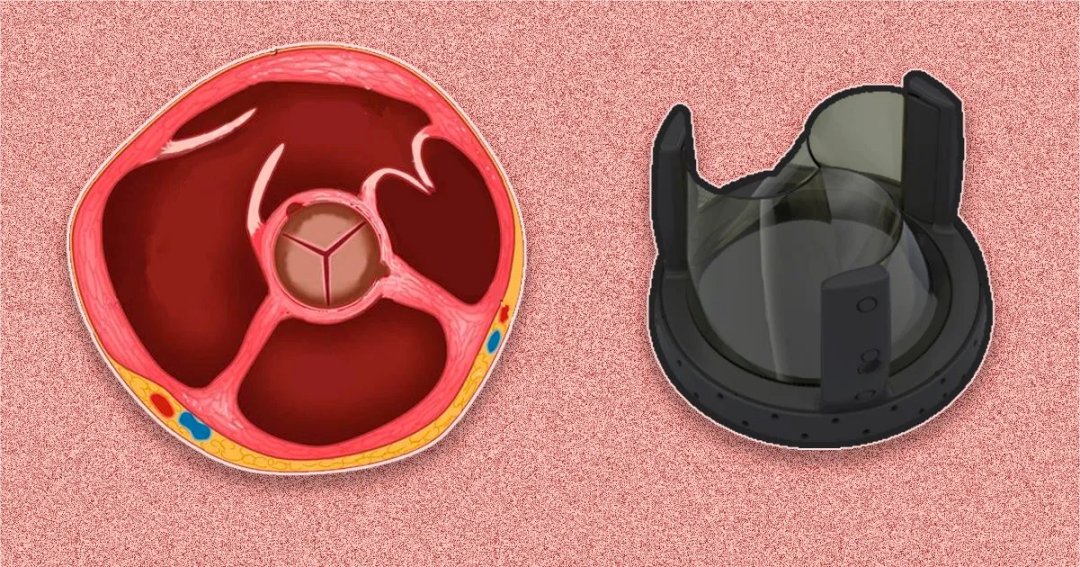

Models of the Wheatley aortic valve, which the Brazilian researchers were able to model on a computer (image: Jornal da USP)
Study developed at Center for Mathematical Sciences Applied to Industry aims to perfect device for cardiovascular treatments.
Study developed at Center for Mathematical Sciences Applied to Industry aims to perfect device for cardiovascular treatments.

Models of the Wheatley aortic valve, which the Brazilian researchers were able to model on a computer (image: Jornal da USP)
Agência FAPESP* – In Brazil, researchers from the University of São Paulo (USP) and the State University of Campinas (UNICAMP) are trying to perfect the Wheatley aortic valve, a device that could improve the lives of millions of people affected by aortic stenosis, a narrowing of the aortic valve opening that blocks the flow of blood from the left ventricle to the aorta.
Aortic stenosis is common among the elderly, and in severe cases, the only viable alternative to improve the patient's quality of life is to replace the dysfunctional natural valve with an artificial one.
The studies have already won the 2023 USP Post-Doc Award in the field of exact and earth sciences for UNICAMP professor Hugo Luiz Oliveira, a member of the research group.
The improvement of the Wheatley aortic valve is important because it should eliminate the need for anticoagulant medication in the post-operative period, as is the case with other polymer valves.
Anticoagulants are used to “thin” the blood, i.e. they prevent the formation of clots and facilitate blood flow. This type of drug treatment requires extreme patient care and attention, especially when bleeding occurs which can lead to other complications.
The research, developed within the scope of the Center for Mathematical Sciences Applied to Industry (CeMEAI), consists in the computational modeling of the device that replaces the natural aortic valve in patients with severe cases of the disease. CeMEAI is a Research, Innovation and Dissemination Center (RIDC) supported by FAPESP and based at the Institute of Mathematical and Computer Sciences of the University of São Paulo (ICMC-USP), São Carlos campus.
CeMEAI's research focuses on the Wheatley aortic valve, created in 2012 by Scottish professor and cardiac surgeon David Wheatley because the inventor himself felt the need to better understand the mathematical and computer model of the device. The study opportunity for the Brazilian researchers came about when Professor Wheatley contacted Sean McKee of the University of Strathclyde, also in Scotland, UK. McKee, in turn, contacted a former doctoral student under his supervision, USP professor José Alberto Cuminato, coordinator of CeMEAI, who is currently on the faculty at Strathclyde.
Process steps
A high-fidelity computer model not only reduces the time required to design the valve and its internal mechanisms but also the cost of physical prototyping and experimental testing.
The CeMEAI team set out to create a computer model of the Wheatley valve in order to reproduce its mechanical behavior under operating conditions. This allows any improvements that may be made to be tested virtually, without the need to produce new parts for each proposed change.
The experiments aim to ensure that the valve opens and closes quickly and that the shear stress in the blood flow is always above a critical limit. In this way, the system prevents the formation of thromboses and guarantees a longer service life for the device compared to conventional valves.
To achieve the proposed result, the researchers tested several software packages. The option that best met the needs of the research project was the LS-DYNA solver, which allowed the mechanical and fluid dynamic performance of the Wheatley aortic valve to be reproduced on the computer under controlled flow and pressure conditions.
*With information from CeMEAI's Communications Office.
Republish
The Agency FAPESP licenses news via Creative Commons (CC-BY-NC-ND) so that they can be republished free of charge and in a simple way by other digital or printed vehicles. Agência FAPESP must be credited as the source of the content being republished and the name of the reporter (if any) must be attributed. Using the HMTL button below allows compliance with these rules, detailed in Digital Republishing Policy FAPESP.





